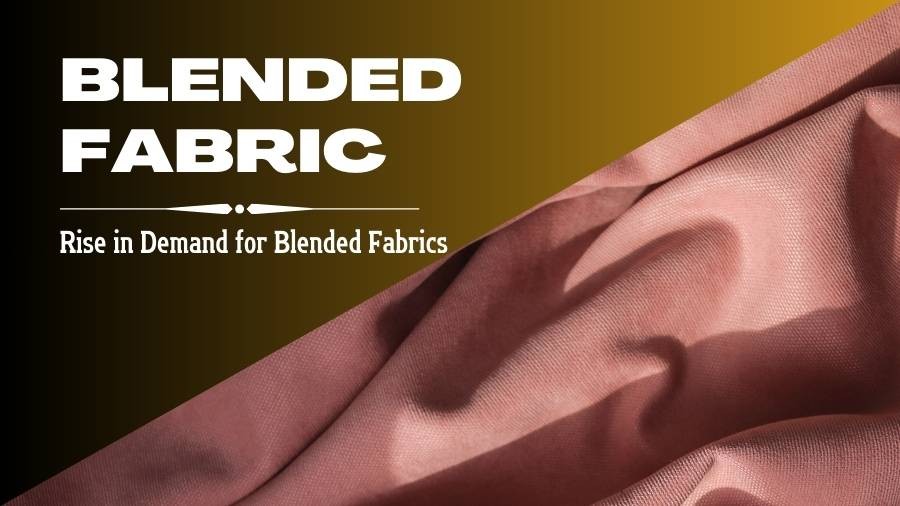Blended Fabric Material Wholesale Grows as Demand Shifts

Blended fabrics continue to see growth in wholesale markets, fueled by increasing demand across industries like fashion, home décor, and technical textiles. These fabrics are made by combining different fibers to create a material with enhanced properties, such as durability, comfort, or moisture resistance. The flexibility of these fabrics makes them attractive to manufacturers looking for versatile materials that balance cost and functionality.
A significant factor driving demand is the variety of fiber combinations available. Common blends include cotton and polyester, wool and viscose, or linen and synthetic fibers. These combinations give designers and manufacturers the opportunity to create products that meet specific performance needs while also reducing costs. For example, polyester-cotton blends are popular for their softness combined with durability, making them ideal for everything from t-shirts to home textiles.
In recent years, woven blended fabric suppliers have reported increased orders, especially from industries that require fabrics in bulk quantities. Suppliers play a vital role in the fabric industry, offering a range of options that allow manufacturers to source materials in large volumes at competitive prices. This is particularly important for sectors like apparel and home furnishings, where companies often seek cost-effective solutions without compromising on quality.
The global market for blended fabrics is substantial and continues to expand. Regions such as Asia, particularly China and India, dominate the market due to their large production capacities and
Another trend in the market is the growing focus on sustainability. Environmental concerns are becoming increasingly important for both consumers and manufacturers. As a result, there is rising interest in eco-friendly blended fabrics. Many suppliers are starting to offer options made from organic or recycled fibers. These sustainable blends not only appeal to environmentally conscious buyers but also help brands reduce their carbon footprints. Companies that offer bulk fabric blends with an eco-friendly focus often position themselves favorably in the competitive marketplace.
Interwoven fabric types are another area gaining traction in the market. These fabrics are created by weaving together different types of yarn to produce intricate patterns and textures. Interwoven fabrics have become popular in both fashion and industrial applications. For instance, interwoven cotton-linen blends are frequently used in summer apparel for their lightness and breathability, while polyester-wool combinations are favored for their warmth and durability in winter wear. This adaptability makes interwoven fabrics appealing to industries looking for multifunctional materials.
Bulk orders have also been on the rise as companies strive to control costs in a shifting global economy. Bulk fabric blends prices can vary depending on fiber composition, quantity, and market demand. For instance, polyester blends tend to be more affordable than those made from natural fibers like silk or wool. Many manufacturers favor polyester blends for their cost-effectiveness, especially when purchasing in bulk for large-scale production. This has allowed suppliers to offer competitive pricing, giving buyers the flexibility to negotiate favorable deals.
The shift toward sustainable production has also led to new innovations in blended fabrics. Many companies are developing blends that use recycled or biodegradable fibers. For example, some suppliers are offering polyester-cotton blends made from recycled plastic bottles. This not only reduces waste but also offers a more sustainable alternative to traditional fabric production. Similarly, innovations in water-saving dyeing techniques are becoming more common as suppliers look for ways to minimize the environmental impact of fabric production.
The wholesale fabric market continues to evolve as suppliers and manufacturers adapt to new trends and challenges. The ability to provide a wide range of fabric blends at competitive prices is key to maintaining relevance in this market. Suppliers who can meet the growing demand for sustainable and innovative fabrics are particularly well-positioned to thrive in the years ahead.
However, the fabric supply chain has been subject to disruptions, particularly during the COVID-19 pandemic. Shipping delays, rising freight costs, and raw material shortages have caused significant challenges for both suppliers and manufacturers. These supply chain issues have led to longer lead times and, in some cases, increased prices for blended fabrics. Many suppliers are now looking for ways to diversify their sourcing options to reduce reliance on any single region or material type. This approach is helping to mitigate some of the risks associated with global supply chain disruptions.
Despite these challenges, the blended fabric market remains resilient. The continued demand for cost-effective, high-performance materials ensures that blended fabrics will remain a key component of the global textile industry. Suppliers that can adapt to changing market conditions and offer innovative, sustainable solutions will likely continue to see strong demand in the future.
While manufacturers and retailers benefit from the cost savings associated with blended fabrics, consumers also appreciate the variety and performance these materials offer. Whether it’s a polyester-cotton blend for everyday clothing or an interwoven fabric for home décor, blended fabrics provide the right balance of functionality and affordability. This makes them an essential part of the modern textile industry.
As more industries adopt blended fabrics for different applications, the market for wholesale fabric blends will likely continue its steady growth. From fashion to industrial applications, the versatility of blended fabrics ensures their ongoing importance in both large and small-scale production.
The future of the blended fabric material wholesale market looks promising. With ongoing innovation and a growing emphasis on sustainability, suppliers and manufacturers are well-positioned to meet the evolving needs of both consumers and businesses.
